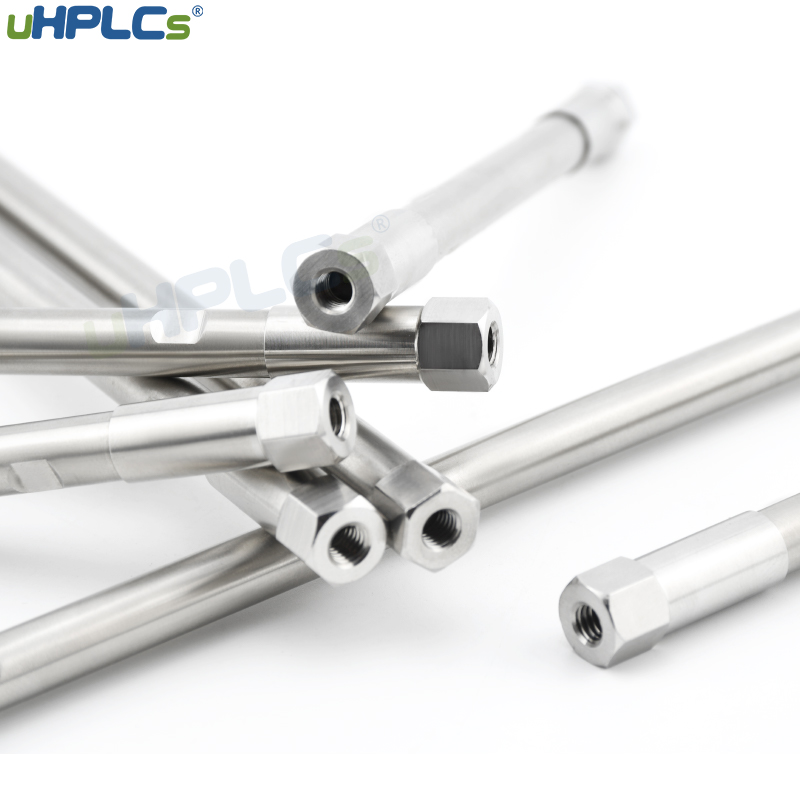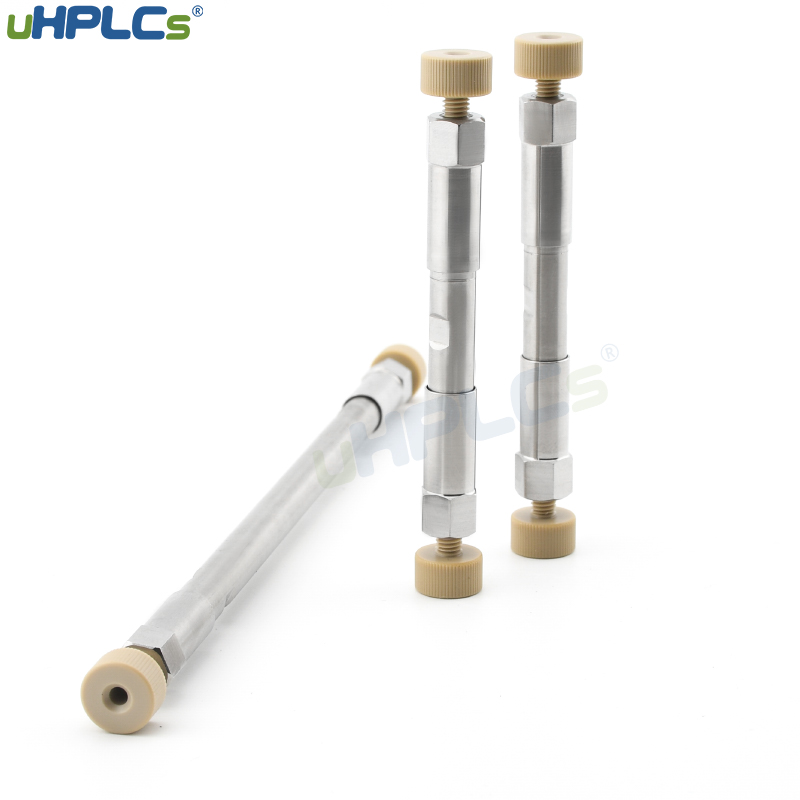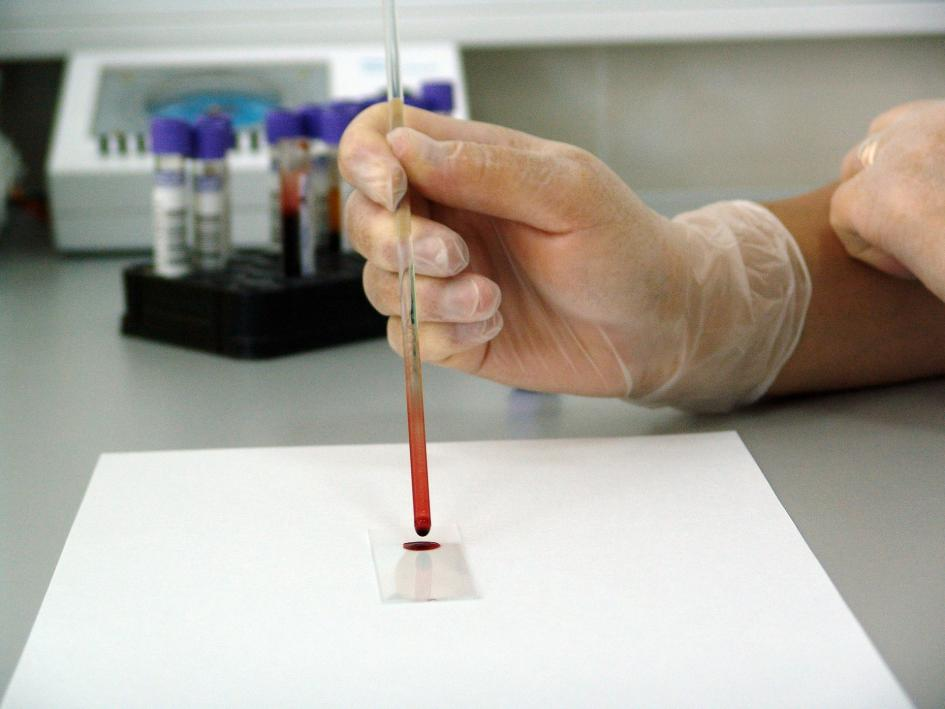In short, stationary phase is the phase that doesn’t move. The choice of stationary phase plays an important role in the separation of samples, sometimes even a decisive role. Different types of chromatography use different stationary phases, for example, the stationary phase of gas-solid chromatography is a variety of solid adsorbents with adsorption activity; The stationary phase of gas-liquid chromatography is a stationary liquid coated on the surface of the carrier, the stationary phase in liquid chromatography is a variety of bonded silica gel beads, and the stationary phase in ion exchange chromatography is a variety of ion exchangers, exclusion The stationary phase in chromatography is a variety of different types of gels and so on. UHPLCS will share the different types and features of stationary phase as below:
Normal-Phase HPLC
In his separations of plant extracts, UHPLCS was successful using a polar stationary phase [chalk in a glass column; see Figure A] with a much less polar [non-polar] mobile phase. This classical mode of chromatography became known as normal phase.
Figure S-1: Normal-Phase Chromatography
Figure S-1 represents a normal-phase chromatographic separation of our three-dye test mixture. The stationary phase is polar and retains the polar yellow dye most strongly. The relatively non-polar blue dye is won in the retention competition by the mobile phase, a non-polar solvent, and elutes quickly. Since the blue dye is most like the mobile phase [both are non-polar], it moves faster. It is typical for normal-phase chromatography on silica that the mobile phase is 100% organic; no water is used.
We have various Normal-Phase column. Such as Diol、SiL column and so on. They can be use to analyse basic organic compound, such as Vitamins, steroids, and many other drug molecules.
Reversed-Phase HPLC
Reversed-phase chromatography (RPC) is a liquid chromatography technique that involves the separation of molecules on the basis of hydrophobic interactions between the solute molecules in the mobile phase and the ligands attached to the stationary phase.
Today, because it is more reproducible and has broad applicability, reversed-phase chromatography is used for approximately 75% of all HPLC methods. Most of these protocols use as the mobile phase an aqueous blend of water with a miscible, polar organic solvent, such as acetonitrile or methanol. This typically ensures the proper interaction of analytes with the non-polar, hydrophobic particle surface. A C18–bonded silica [sometimes called ODS] is the most popular type of reversed-phase HPLC packing.
Figure S-2: Reversed-Phase Chromatography
Chromatographic columns are the core of the HPLC separation process, and reversed-phase chromatographic columns have strong analytical capabilities and are often the first choice for analytical columns. UHPLCS C18 column has excellent peak shape in selectivity, gradient and isocratic conditions, higher resolution, sensitivity and reproducibility; wider pH tolerance, suitable for the analysis of various types of compounds. Besides, UHPLCS has various type liquid chromatography column for you choose, such as C4、C8、ODS and so on.
Separations Based on Charge: Ion-Exchange Chromatography [IEC]
In an ion exchange column, the stationary phase is a resin on which a usually organic coating provides a charged surface.
Hydrophilic-Interaction Chromatography [HILIC]
HILIC may be viewed as a variant of normal-phase chromatography. In normal-phase chromatography, the mobile phase is 100% organic. Only traces of water are present in the mobile phase and in the pores of the polar packing particles. Polar analytes bind strongly to the polar stationary phase and may not elute.
Adding some water [< 20%] to the organic mobile phase [typically an aprotic solvent like acetonitrile] makes it possible to separate and elute polar compounds that are strongly retained in the normal-phase mode [or weakly retained in the reversed-phase mode]. Water, a very polar solvent, competes effectively with polar analytes for the stationary phase. HILIC may be run in either isocratic or gradient elution modes. Polar compounds that are initially attracted to the polar packing material particles can be eluted as the polarity [strength] of the mobile phase is increased [by adding more water]. Analytes are eluted in order of increasing hydrophilicity [chromatographic polarity relative to water]. Buffers or salts may be added to the mobile phase to keep ionizable analytes in a single form.
In short, no matter what type of fixation is relative to the resolution of chiral isomers and the separation of protein and peptide macromolecules, it is still under continuous exploration and improvement. Biological sciences are advancing. More and more perfect and open up new directions. As a local manufacturer of chromatography accessories with strong technical capabilities in China, UPLCS will do their best to provide more high-quality and more convenient products and services for the majority of scientific research workers, creating a better future hand in hand.
Post time: May-06-2021











